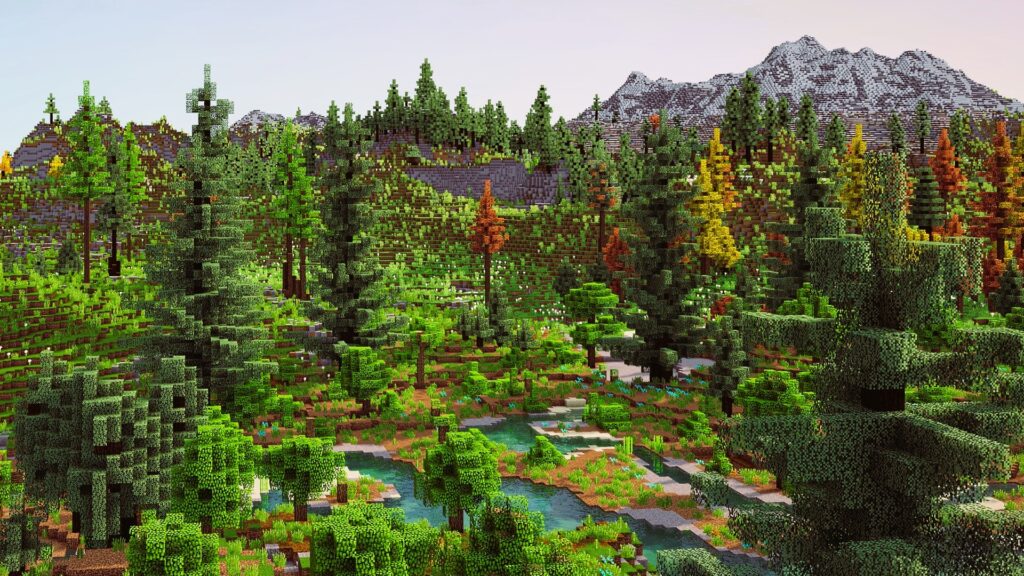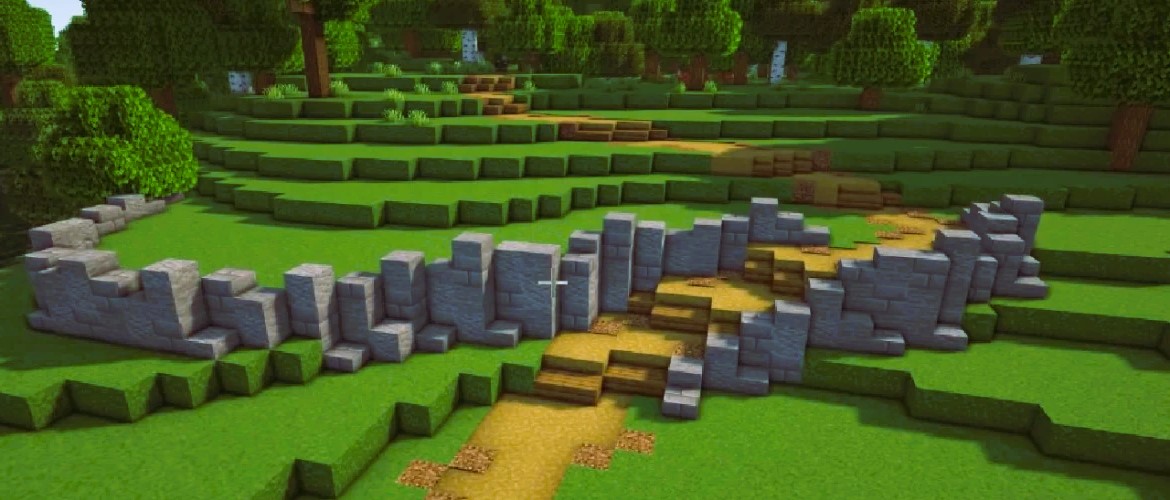Minecraft, with its vast and blocky landscapes, provides players with a canvas to unleash their creativity and design breathtaking terrains that mimic the beauty of the natural world. In this guide, we will explore tips and techniques for crafting realistic landscapes in Minecraft, transforming your virtual world into a visually stunning masterpiece.
1. Understanding Terrain Generation
Minecraft’s terrain is generated randomly, providing a foundation for your landscapes. However, understanding how the terrain generator works allows you to anticipate and work with natural features such as mountains, valleys, and bodies of water.
2. Utilizing Biomes Effectively
Each biome in Minecraft has distinct characteristics, including unique vegetation, weather patterns, and terrain types. Choose a biome that aligns with your vision for the landscape. For example, a forest biome may be perfect for creating a lush, vibrant terrain, while a mesa biome offers opportunities for rocky and arid landscapes.

3. Layering Terrain Elements
Realistic landscapes have depth and texture. Experiment with layering different materials and terrain features. Combine grass, dirt, stone, and sand to create natural-looking hills, valleys, and riverbanks. Layering adds visual interest and mimics the complexity found in real-world terrains.
4. Customizing the Shoreline
If your landscape includes water bodies like rivers, lakes, or oceans, pay attention to the shoreline. Avoid straight and uniform shorelines; instead, create gentle curves and irregular shapes. Use a mix of blocks, including sand, gravel, and clay, to simulate the variety seen in natural shorelines.
5. Adding Vegetation and Flora
Bring life to your landscape by adding vegetation. Consider the types of plants that thrive in your chosen biome. Use bone meal to encourage the growth of tall grass, flowers, and trees, creating a lush and vibrant environment. Innovative interior design in Minecraft, more details in the article on transforming the space.
6. Implementing Natural Erosion
To achieve a realistic look, mimic the effects of erosion on your landscape. Carve out natural-looking caves, ravines, and overhangs. This process can be time-consuming but adds authenticity to your terrain.
7. Incorporating Custom Structures
While the focus is on natural landscapes, strategically placing custom structures like bridges, pathways, or small villages can enhance the overall appeal. Ensure these structures blend seamlessly with the terrain, complementing rather than overpowering the natural elements.
8. Embracing Varied Terrain Heights
Real-world landscapes feature diverse elevations, from rolling hills to towering mountains. Use varying terrain heights to create a sense of scale and drama. Experiment with cliffs, plateaus, and peaks to capture the essence of different landscapes.
9. Experimenting with Terrain Themes

Consider the theme or inspiration for your terrain. Whether it’s a serene Japanese garden, a rugged mountain range, or a mystical forest, having a theme helps guide your design choices and creates a cohesive and immersive experience.
10. Seeking Inspiration and Further Resources
For additional inspiration and detailed tutorials, visit reputable Minecraft resources such as Minecraft Fandom. These platforms offer a wealth of information, landscaping techniques, and community insights to elevate your terrain-building skills.
Conclusion
Creating realistic landscapes in Minecraft is a captivating endeavor that allows you to express your creativity while emulating the beauty of the natural world. By applying these tips and techniques, you can transform the blocky landscapes into stunning terrains that captivate the imagination.
Embark on your landscape-building journey, and let the beauty of your Minecraft world unfold in ways that mirror the wonders of nature!

